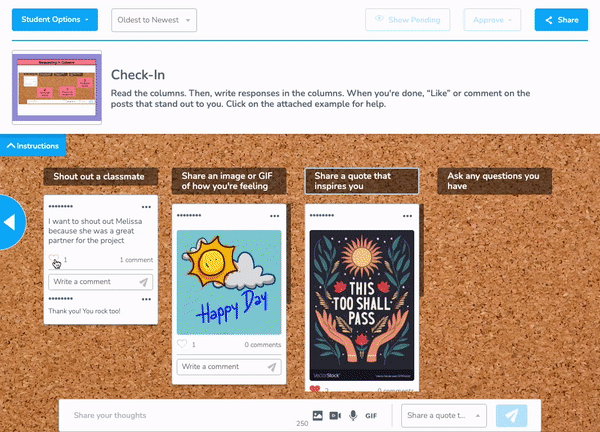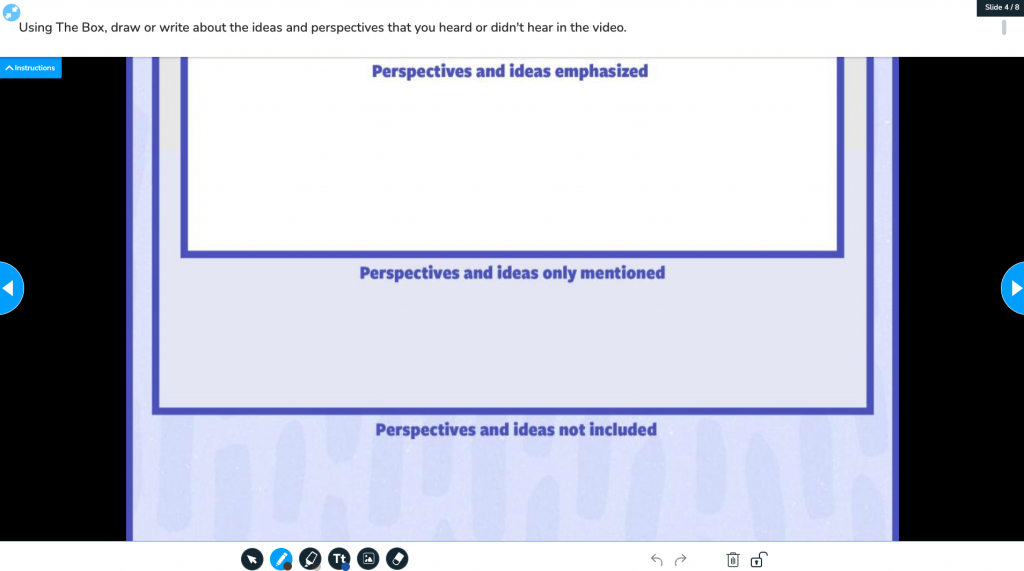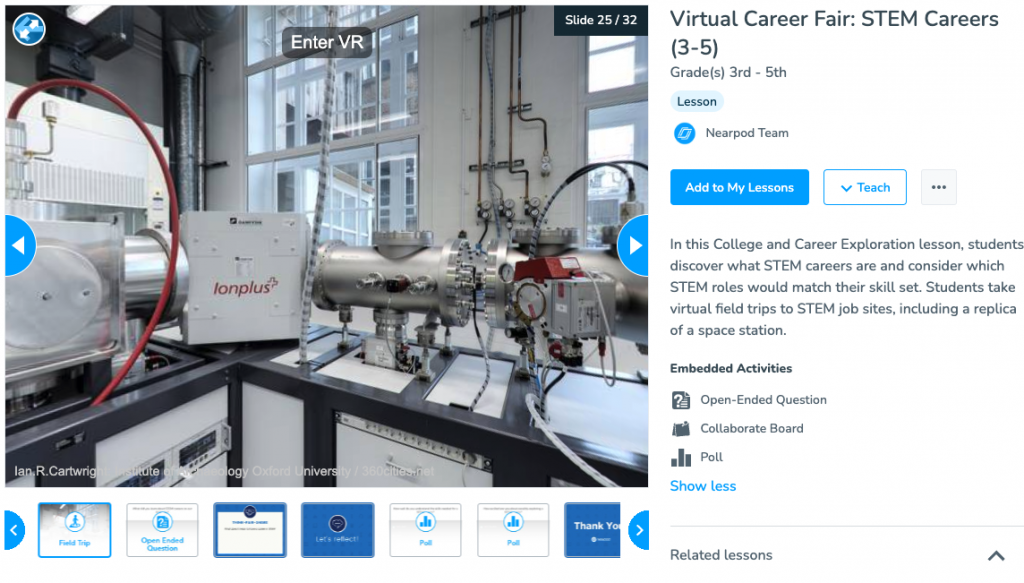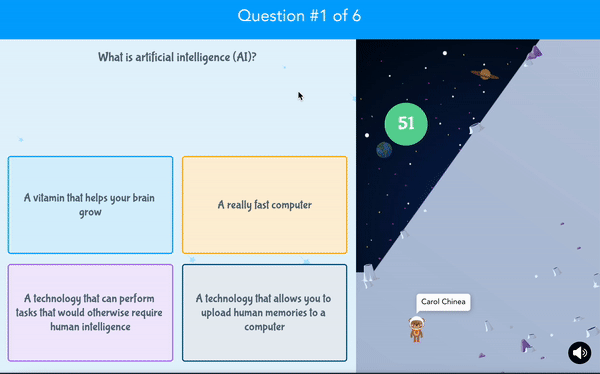
7 Steps to promote equity in the classroom
What does equity in the classroom look like to you? As educators, our responsibilities span far beyond the depths of academics. I’m sure you often refer to your students as your “kids,” and we should recognize the magnitude of that label. It is important that we are cognizant of the significant role we play in our classroom. If we are dedicated to the success of every student, it is important to recognize that there is, at times, an uneven playing field. Students may face unfair prejudices about their capabilities or barriers to success due to their cognitive or physical ability, economic status, race or ethnicity, gender, or any other number of factors. Ensuring equity in education is important for supporting students across all grade levels.
Why is it important to have an equitable classroom?
Prioritizing equity in the classroom enables educators to create an inclusive environment, celebrating each student’s uniqueness and removing barriers to their academic success. This commitment actively addresses and eliminates systemic inequalities, fostering a sense of belonging in students, which enhances their overall learning experience. Embracing diversity and achieving equity cultivates a positive atmosphere where all students can thrive academically, socially, and emotionally. An equitable classroom is the foundation for a just and compassionate society, empowering students to navigate challenges, discover their potential, and contribute meaningfully in and outside the classroom. It’s also important for school leaders to focus on inclusion and equity to improve school climate and boost a positive culture.
Use Nearpod to create equitable learning opportunities for all students
At Nearpod, we understand the importance of fostering an equitable classroom environment where every student can succeed and be celebrated for their uniqueness. We also recognize that teachers may find this task daunting, given the numerous requirements they already face. Nearpod helps facilitate inclusive classrooms, allowing teachers to hear from every student. Leveraging technology tools like Nearpod, educators can create an equitable learning environment that amplifies student voice, narrows the opportunity gap, and ensures universal access to opportunities.
New to Nearpod? Teachers can sign up for free below to access the resources in this post and create their own interactive lessons. Administrators can schedule a call with an expert to unlock the full power of Nearpod for schools and districts.
7 Steps to promote equity in the classroom
1. Lay the foundation
The first step towards equity is creating the environment in which it lives, and in this case, it’s your classroom. Establish a foundation of inclusion and respect for diversity that shapes your interactions with others. Educators can start by fostering open communication by teaching equity, why it’s important, and acknowledging individual differences. Implementing inclusive teaching practices, such as culturally responsive teaching, sets the tone for an environment that values every student. It also entails creating a safe space where students feel comfortable expressing their unique identities.
Building meaningful relationships with students is crucial, creating a safe space where they feel seen, heard, and understood. This involves taking the time to know each student on a personal level and understanding their backgrounds, interests, and challenges. It’s important to continue to nurture these relationships throughout the school year. Using Nearpod’s formative assessment tools, you can ask students various thoughtful questions about themselves. Teachers get insight into their responses in real-time, allowing you to interact with them in the moment while still hearing from everyone. Consider using Polls, Open-Ended Questions, Draw It, or a community-building favorite, Collaborate Board.
2. Empower critical thinking
As their teacher, we have limited control over the content they are exposed to through their classroom textbook or state-provided resources; however, we do possess the ability to help our students analyze biases and gaps. With critical thinking, we are allowing our students to actively participate in their learning process rather than be passive, which supports a culturally equitable classroom environment. Students share their deep reasonings and understandings with classmates to bridge cultural horizons and ensure all perspectives are heeded.
3. Culturally responsive pedagogy
Responsiveness and relevance tie to the emotional part of learning. Consider the following questions during instruction:
- How much do they care about what they’re learning?
- How invested are they?
We all work harder and learn deeper when we have a passion and relevance for what we’re learning. Allow students to see themselves in history through trials, tribulations, and, most importantly, triumphs. Each stage is bridging the gap and creating an equitable and inclusive environment for all students to learn.
You can practice culturally responsive pedagogy and equity in learning with Nearpod’s lessons and interactive features. Nearpod’s lesson library includes free quality lessons you can use to create an inclusive and engaging learning experience. Use the search bar and filters to find resources that fit your classroom needs, or start off by exploring the Promoting Inclusion and Perspective Analysis lesson folders!
4. Provide community involvement
Incorporating family and community knowledge enhances the student’s learning experience. With basic knowledge of career paths and clusters, students can start to piece together the purpose behind their learning. Unfortunately, identifying career paths early on is either inaccessible or not a priority for some. Many students only have exposure to careers that exist in their immediate community; this way, increasing inequity. The more we can incorporate the community and family into our classrooms through guest speakers, career days, field trips, etc., the more we can provide equal access for all our students.
Consider using Nearpod’s Virtual Reality (VR) Field Trips to take students anywhere in the world. Explore colleges and universities using lessons from The College Tour or various career pathways through virtual career tours.
5. Plan with purpose
Planning your lessons to promote an equitable classroom can seem like an intimidating task. But with the help of social and emotional learning activities, it doesn’t have to be. Students respond differently to different types of content, whether due to culture, socialization, or learning preference. With intentional planning, we can ensure that every student’s needs are valued and objectively met.
Think about delivering different forms of content through learning stations. At each station, provide students with a range of materials for their learning styles. For example, students can rotate between stations that involve:
- Playing an educational game, like Time to Climb or Matching Pairs with timers
- Reading an article, which can be embedded into your Nearpod lesson by adding web content
- Taking a VR Field Trip and answering an Open-Ended Question about what they saw and felt
- Express themselves through creating art using a Draw It activity
6. Empower through student voice
We often have constraints on what we teach, but the how is an area where we have more flexibility. Empowering students with a voice and choice in their learning process is crucial. Recognizing that a student’s sense of belonging is key to promoting deeper learning and creating equity in the classroom. Listening to them and making decisions based on their feedback becomes a pivotal lever.
Conduct a Poll for your students to understand how they want to learn and prove their understanding of the content. By doing this, we are allowing our students to have a voice, highlighting their individualities, and showing them that their thoughts and preferences are important. They are gaining confidence and conviction in their wants. They’re empowered to take ownership of their learning.
7. Use positive and inclusive language
Incorporating positive and inclusive language is a powerful way to enhance the learning experience for all students. Recognize that children process content more effectively when their cultures and languages are integrated into the curriculum. Traditional instruction may not resonate with every student, so it becomes our responsibility to cater to diverse learning needs. Encourage social conversations among students and foster collaborative work to cultivate a strong sense of community in the classroom. Examples of inclusive language include using gender-neutral terms, acknowledging diverse cultural backgrounds, and affirming the unique strengths of each student. It’s important to make this a shared language to encourage students to do the same, which builds a sense of mutual respect, empathy, and understanding.
Start using Nearpod for teaching and creating equity in the classroom
As educators, we can influence personal growth and positively value differences in our classroom through equity in the classroom strategies. We can create a space where our students come to every day feeling valued and having access to the same learning resources and support despite their differences. These differences are actually something that should be celebrated. We also have the power to surrender our power and allow our students to have ownership of their learning. Together, we can move further into creating equitable classrooms.
New to Nearpod? Teachers can sign up for free below to access the resources in this post and create their own interactive lessons. Administrators can schedule a call with an expert to unlock the full power of Nearpod for schools and districts.

Katie is a Personalized Learning Leader in Volusia County Schools. She helps teachers incorporate educational technology into their curriculum. She believes that students deserve an instructional practice that resonates with their daily lives, and that includes the utilization of technology. She is on a mission to promote the endless benefits that edtech can have on 21st century instructional practices.





